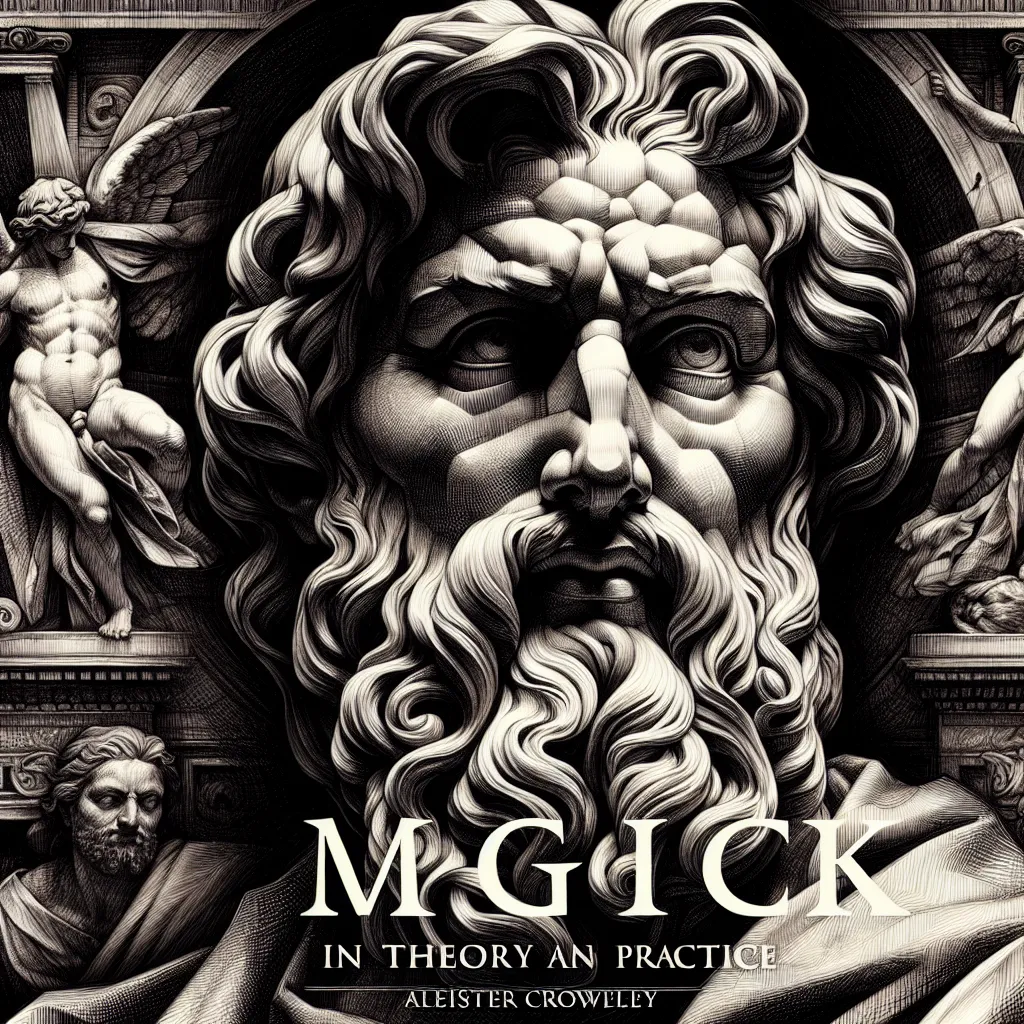
- Published on
- Authors

- Name
- You
Magick in Theory and Practice: Analyzing Crowleys Magnum Opus
Introduction
Aleister Crowley, often hailed as the most enigmatic and controversial figure in modern occultism, left an indelible mark on the study and practice of ritual magic. His magnum opus, "Magick in Theory and Practice," continues to be a cornerstone for those delving into the mystical arts. This article dissects the layers of Crowleys work, examining its historical context, theoretical foundations, and practical applications, while weaving in the threads of advanced science and mystical wisdom.
Historical Context
To understand "Magick in Theory and Practice," it's essential to explore the backdrop against which Crowley wrote. The early 20th century was a period of intense interest in both esoteric traditions and burgeoning scientific paradigms. Crowley, a polymath with interests ranging from mountaineering to mysticism, sought to bridge these seemingly disparate realms.
| Historical Period | Key Events | Influence on Crowleys Work |
|---|---|---|
| Early 20th Century | World Wars, Technological Advancements | Quest for deeper meaning, blending of science and mysticism |
| Victorian Occult Revival | Rise of The Golden Dawn, Masonic Movements | Foundation of Crowleys early occult education |
Theoretical Foundations
Defining Magick
Crowley famously defined magick as "the Science and Art of causing Change to occur in conformity with Will." This definition underscores his view of magick as both a disciplined practice and an expressive art form, interlacing personal will with universal forces.
The Role of Thelema
Central to Crowleys philosophy is Thelema, a spiritual system articulated in his 1904 book, "The Book of the Law." Thelema emphasizes the concept "Do what thou wilt shall be the whole of the Law," advocating for individual self-realization and cosmic alignment.
| Concept | Definition | Relevance to Magick |
|---|---|---|
| Will | Innate, true purpose | Central operative force in magickal practice |
| Thelema | System of spiritual philosophy | Framework for understanding and executing magick |
Practical Applications
"Magick in Theory and Practice" is rich with ritual instructions and detailed analyses of magickal principles. Here, we summarize a few key ritual structures and their intended outcomes:
Rituals
The Lesser Banishing Ritual of the Pentagram (LBRP)
- Purpose: To clear space of residual energies, creating a purified environment.
- Procedure:
- Face East, trace a pentagram with consecrated instrument.
- Invoke archangels at cardinal points.
- Close with assertion of personal and divine sovereignty.
The Invocation of Horus
- Purpose: To call upon the energies of the Egyptian god Horus for empowerment and guidance.
- Procedure:
- Perform preparatory banishings.
- Recite specific invocations aligned with attributes of Horus.
- Meditate on the desired integration of Horus' qualities.
Symbols and Tools
Crowley emphasized the importance of symbols and tools in ritual practices. He elaborated on the significance of items such as wands, chalices, swords, and pentacles, each representing different aspects of the practitioner's will and energy.
| Tool | Symbolism | Usage in Ritual |
|---|---|---|
| Wand | Willpower, direction | Channeling intention and energy |
| Chalice | Emotions, receptivity | Containing and manifesting spiritual essence |
| Sword | Intellect, division | Cutting through illusions, banishing |
| Pentacle | Stability, material realm | Grounding, protection |
Advanced Science and Mystical Wisdom
Crowley was ahead of his time in recognizing parallels between emerging scientific theories and mystical knowledge. His work often parallels the principles seen in quantum mechanics and psychology, such as:
- Observer Effect: Crowleys emphasis on the will's influence mirrors the idea that observation changes the state of a quantum system.
- Psychological Archetypes: Crowleys use of gods and symbols aligns with Jungs archetypes, representing universal aspects of the human psyche.
Conclusion
Aleister Crowleys "Magick in Theory and Practice" is not merely a relic of occult history but a living text that continues to inspire and challenge practitioners and scholars alike. By interweaving meticulous ritual disciplines with esoteric philosophy and proto-scientific insights, Crowley crafted a framework that defies temporal limitations, inviting us to explore the true potential of human will and divine alignment.
As we traverse the mystical landscapes that Crowley charted, we find that magick, much like advanced science, beckons us to expand our understanding of reality, urging us to glimpse the profound unity underlying all phenomena.
